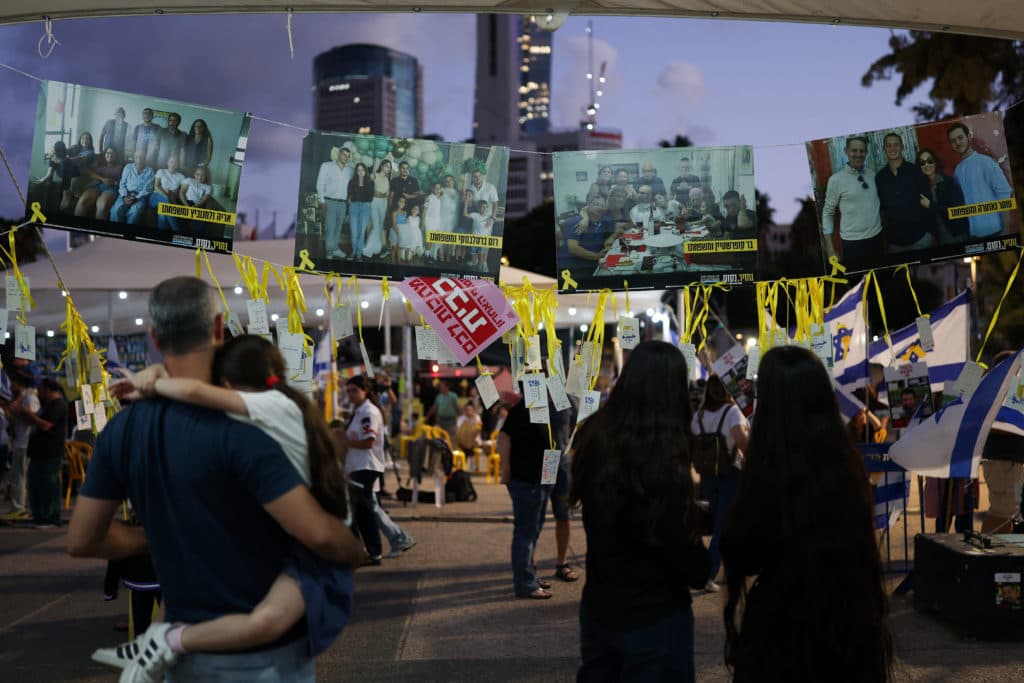Loading News Article...
We're loading the full news article for you. This includes the article content, images, author information, and related articles.
We're loading the full news article for you. This includes the article content, images, author information, and related articles.
A crucial phase of the ceasefire deal between Israel and Hamas is underway, with the anticipated release of 20 Israeli hostages from Gaza and approximately 2,000 Palestinian detainees from Israeli custody.

The Israeli government anticipates the release of all 20 remaining living hostages held in Gaza on Monday, October 13, 2025, as part of a ceasefire agreement. Concurrently, Israel is preparing for the release of approximately 2,000 Palestinian detainees. This exchange marks a critical juncture in the two-year conflict.
The International Committee of the Red Cross (ICRC) has initiated a multi-phase operation to facilitate the transfer of hostages from Gaza to Israeli authorities and Palestinian detainees to Gaza and the West Bank. The hostages are expected to be transferred to the Red Cross and then transported via six to eight vehicles to a military base for medical assessment and family reunification.
Kenya has welcomed the first phase of the ceasefire agreement, describing it as a crucial step towards alleviating human suffering in Gaza. An announcement from the Office of the Prime Cabinet Secretary and the Ministry of Foreign Affairs and Diaspora, signed by Prime Cabinet Secretary Musalia Mudavadi on Thursday, October 9, 2025, reiterated Kenya's long-standing position for a two-state solution as outlined in United Nations resolutions.
While Kenya has historically maintained close ties with Israel since its independence in 1963, its stance on the Gaza conflict has seen nuances. President William Ruto condemned the Hamas attack on October 7, 2023, and initially endorsed Israel's policy. However, Nairobi has also supported UN resolutions calling for a ceasefire and a two-state solution, with President Ruto reaffirming this position during the 80th Session of the United Nations General Assembly in September 2024.
The current conflict escalated following the Hamas-led attacks on Israel on October 7, 2023, which resulted in approximately 1,200 deaths and around 250 people taken hostage. The ongoing war has led to significant destruction in Gaza and a severe humanitarian crisis.
This ceasefire agreement, mediated by countries including the United States, Egypt, Qatar, and Turkey, aims to bring a temporary cessation of hostilities, facilitate humanitarian aid into Gaza, and enable the exchange of hostages and prisoners. Previous attempts at de-escalation have been challenging, with both sides having distinct demands. Hamas has consistently sought guarantees for a permanent ceasefire and full Israeli withdrawal from Gaza, while Israel has insisted on Hamas disarming.
The ceasefire agreement includes provisions for a temporary cessation of mutual military operations and a phased withdrawal of Israeli forces from densely populated areas in Gaza. It also addresses the return of displaced persons to their areas of residence and the unimpeded entry of humanitarian aid.
The role of the ICRC as a neutral intermediary in facilitating the transfer of hostages and detainees is crucial, ensuring adherence to international humanitarian law. The organization's mandate is to provide practical support for such releases once an agreement is reached by the parties.
Families of the Israeli hostages have expressed immense anticipation and relief at the prospect of their loved ones' return. Similarly, Palestinian families are preparing to receive detainees, though Israeli authorities have reportedly advised against public celebrations and extensive media interaction.
Analysts suggest that this development could significantly influence public debate and policy execution in the near term, with calls for clarity on timelines, costs, and safeguards. The humanitarian toll of the conflict has been immense, with over 1 million people in Gaza potentially facing the highest level of starvation by mid-July 2024, according to UN agencies.
While the ceasefire offers a glimmer of hope, significant challenges remain. The future governance of Gaza and the disarmament of Hamas are contentious issues that have yet to be fully resolved. The economic impact of the conflict has been severe, with preliminary assessments by the World Bank, United Nations, and European Union indicating nearly $18.5 billion in infrastructure damage in Gaza as of October 2024.
Globally, the conflict has impacted trade, particularly through disruptions in the Red Sea shipping route, leading to surging freight rates. A sustained ceasefire could offer a reprieve for global trade and potentially ease oil prices, though the broader economic implications depend on the long-term stability of the region.
The coming days will be critical as the hostage and prisoner exchange unfolds. Attention will remain on the full implementation of the ceasefire agreement and ongoing negotiations regarding the long-term future of Gaza. The international community will be closely monitoring efforts to ensure sustained humanitarian aid and to address the underlying issues of the conflict. Further diplomatic engagements are expected to build on this initial breakthrough towards a lasting peace, anchored on a two-state solution.
Keep the conversation in one place—threads here stay linked to the story and in the forums.
Other hot threads
E-sports and Gaming Community in Kenya
Active 6 months ago
Popular Recreational Activities Across Counties
Active 6 months ago
The Role of Technology in Modern Agriculture (AgriTech)
Active 6 months ago
Investing in Youth Sports Development Programs
Active 6 months ago